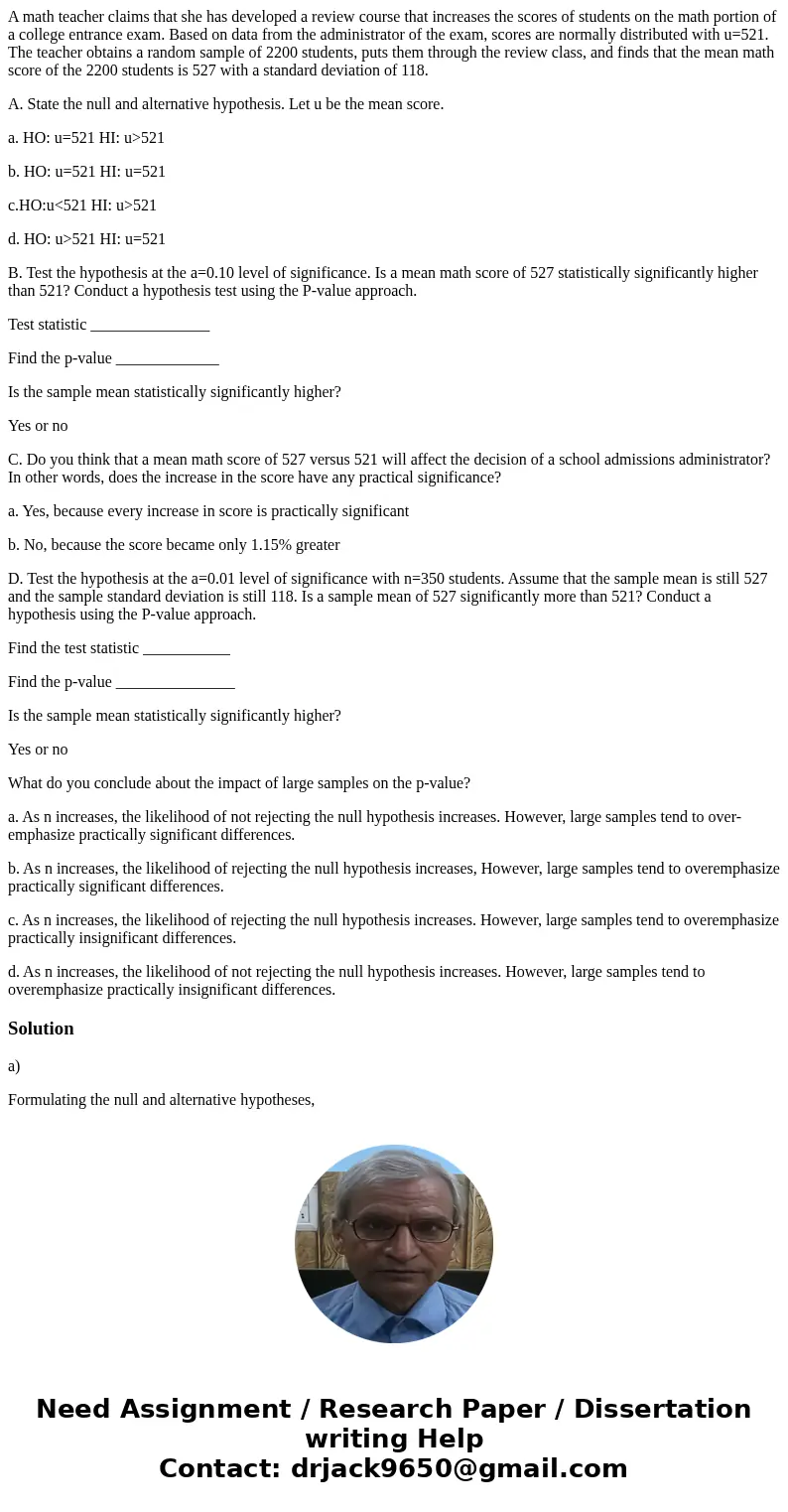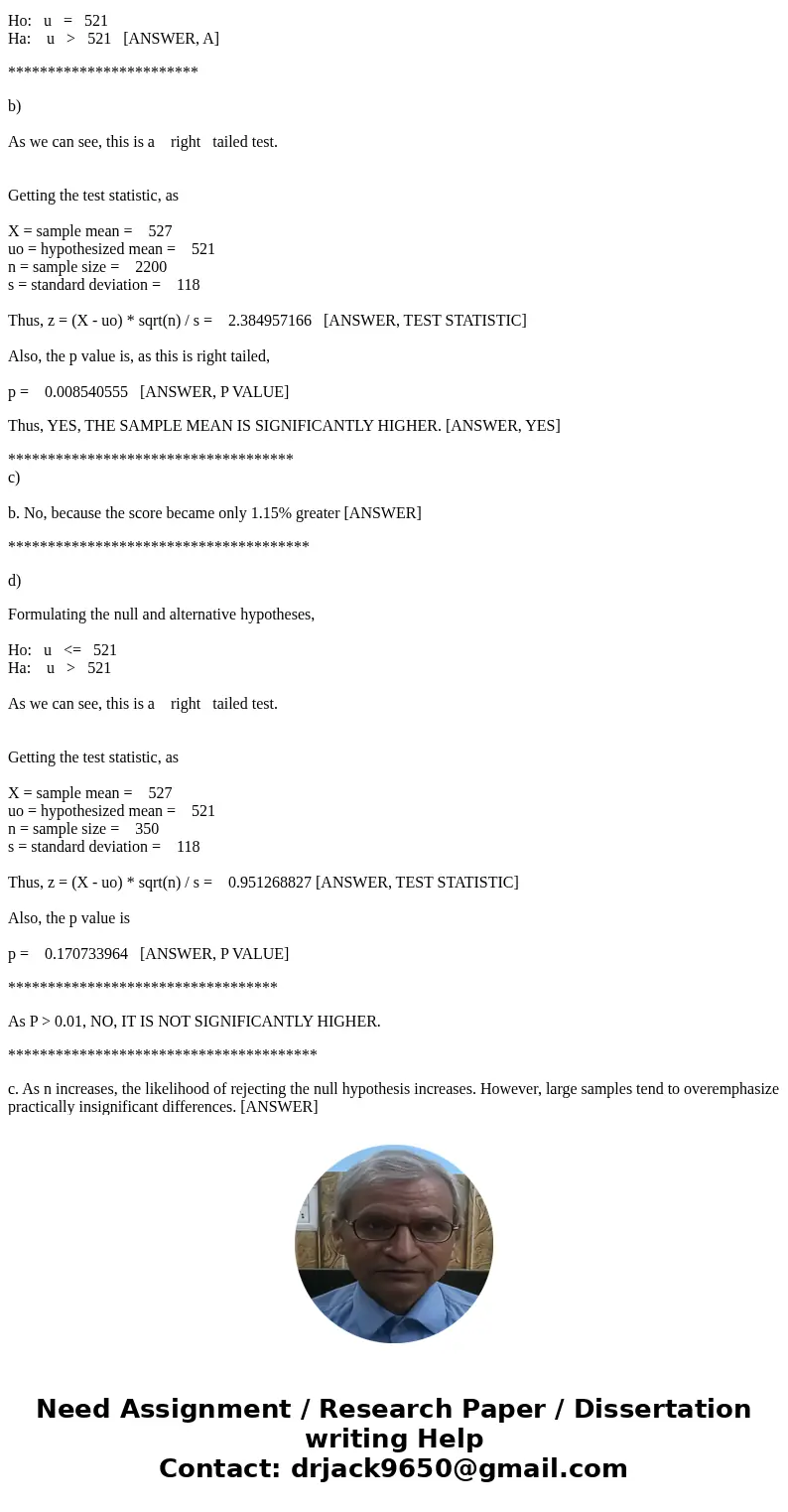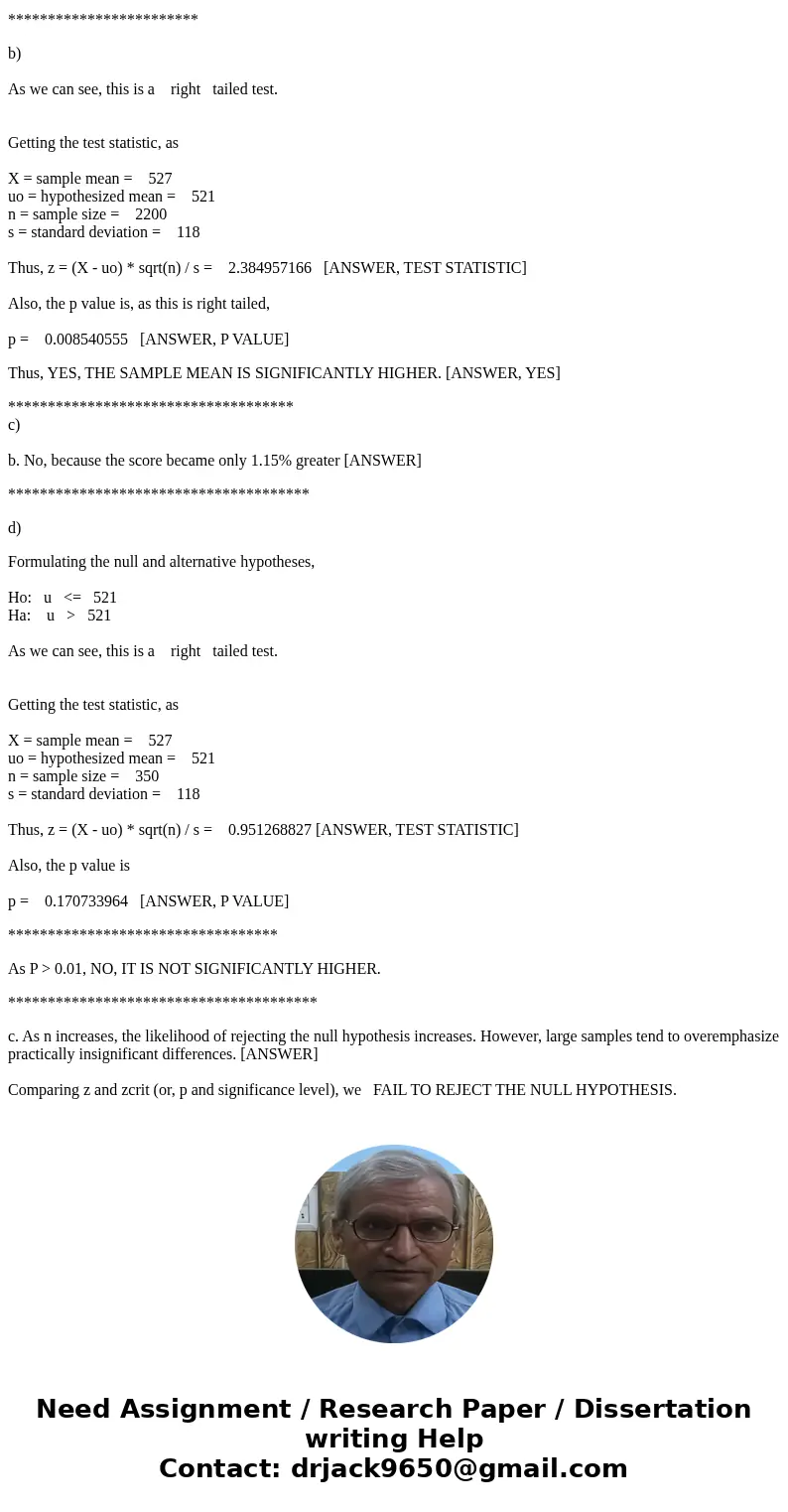A math teacher claims that she has developed a review course
A math teacher claims that she has developed a review course that increases the scores of students on the math portion of a college entrance exam. Based on data from the administrator of the exam, scores are normally distributed with u=521. The teacher obtains a random sample of 2200 students, puts them through the review class, and finds that the mean math score of the 2200 students is 527 with a standard deviation of 118.
A. State the null and alternative hypothesis. Let u be the mean score.
a. HO: u=521 HI: u>521
b. HO: u=521 HI: u=521
c.HO:u<521 HI: u>521
d. HO: u>521 HI: u=521
B. Test the hypothesis at the a=0.10 level of significance. Is a mean math score of 527 statistically significantly higher than 521? Conduct a hypothesis test using the P-value approach.
Test statistic _______________
Find the p-value _____________
Is the sample mean statistically significantly higher?
Yes or no
C. Do you think that a mean math score of 527 versus 521 will affect the decision of a school admissions administrator? In other words, does the increase in the score have any practical significance?
a. Yes, because every increase in score is practically significant
b. No, because the score became only 1.15% greater
D. Test the hypothesis at the a=0.01 level of significance with n=350 students. Assume that the sample mean is still 527 and the sample standard deviation is still 118. Is a sample mean of 527 significantly more than 521? Conduct a hypothesis using the P-value approach.
Find the test statistic ___________
Find the p-value _______________
Is the sample mean statistically significantly higher?
Yes or no
What do you conclude about the impact of large samples on the p-value?
a. As n increases, the likelihood of not rejecting the null hypothesis increases. However, large samples tend to over-emphasize practically significant differences.
b. As n increases, the likelihood of rejecting the null hypothesis increases, However, large samples tend to overemphasize practically significant differences.
c. As n increases, the likelihood of rejecting the null hypothesis increases. However, large samples tend to overemphasize practically insignificant differences.
d. As n increases, the likelihood of not rejecting the null hypothesis increases. However, large samples tend to overemphasize practically insignificant differences.
Solution
a)
Formulating the null and alternative hypotheses,
Ho: u = 521
Ha: u > 521 [ANSWER, A]
************************
b)
As we can see, this is a right tailed test.
Getting the test statistic, as
X = sample mean = 527
uo = hypothesized mean = 521
n = sample size = 2200
s = standard deviation = 118
Thus, z = (X - uo) * sqrt(n) / s = 2.384957166 [ANSWER, TEST STATISTIC]
Also, the p value is, as this is right tailed,
p = 0.008540555 [ANSWER, P VALUE]
Thus, YES, THE SAMPLE MEAN IS SIGNIFICANTLY HIGHER. [ANSWER, YES]
************************************
c)
b. No, because the score became only 1.15% greater [ANSWER]
**************************************
d)
Formulating the null and alternative hypotheses,
Ho: u <= 521
Ha: u > 521
As we can see, this is a right tailed test.
Getting the test statistic, as
X = sample mean = 527
uo = hypothesized mean = 521
n = sample size = 350
s = standard deviation = 118
Thus, z = (X - uo) * sqrt(n) / s = 0.951268827 [ANSWER, TEST STATISTIC]
Also, the p value is
p = 0.170733964 [ANSWER, P VALUE]
**********************************
As P > 0.01, NO, IT IS NOT SIGNIFICANTLY HIGHER.
***************************************
c. As n increases, the likelihood of rejecting the null hypothesis increases. However, large samples tend to overemphasize practically insignificant differences. [ANSWER]
Comparing z and zcrit (or, p and significance level), we FAIL TO REJECT THE NULL HYPOTHESIS.



 Homework Sourse
Homework Sourse